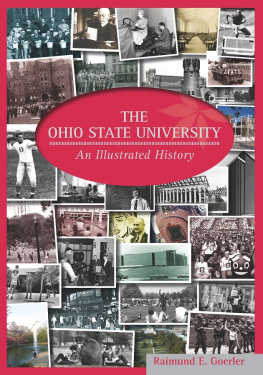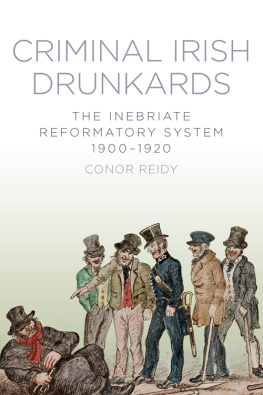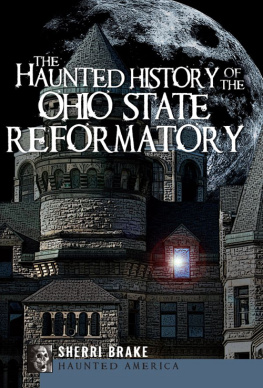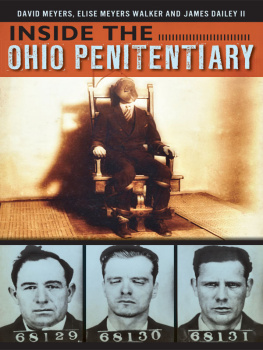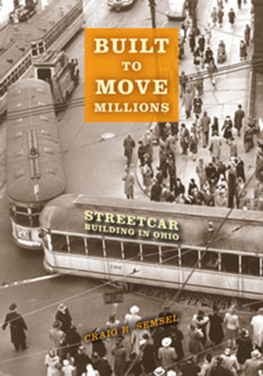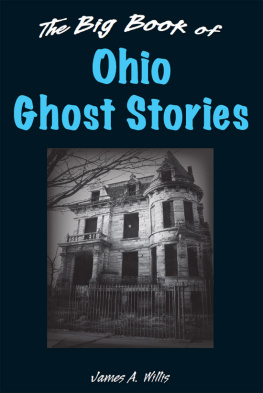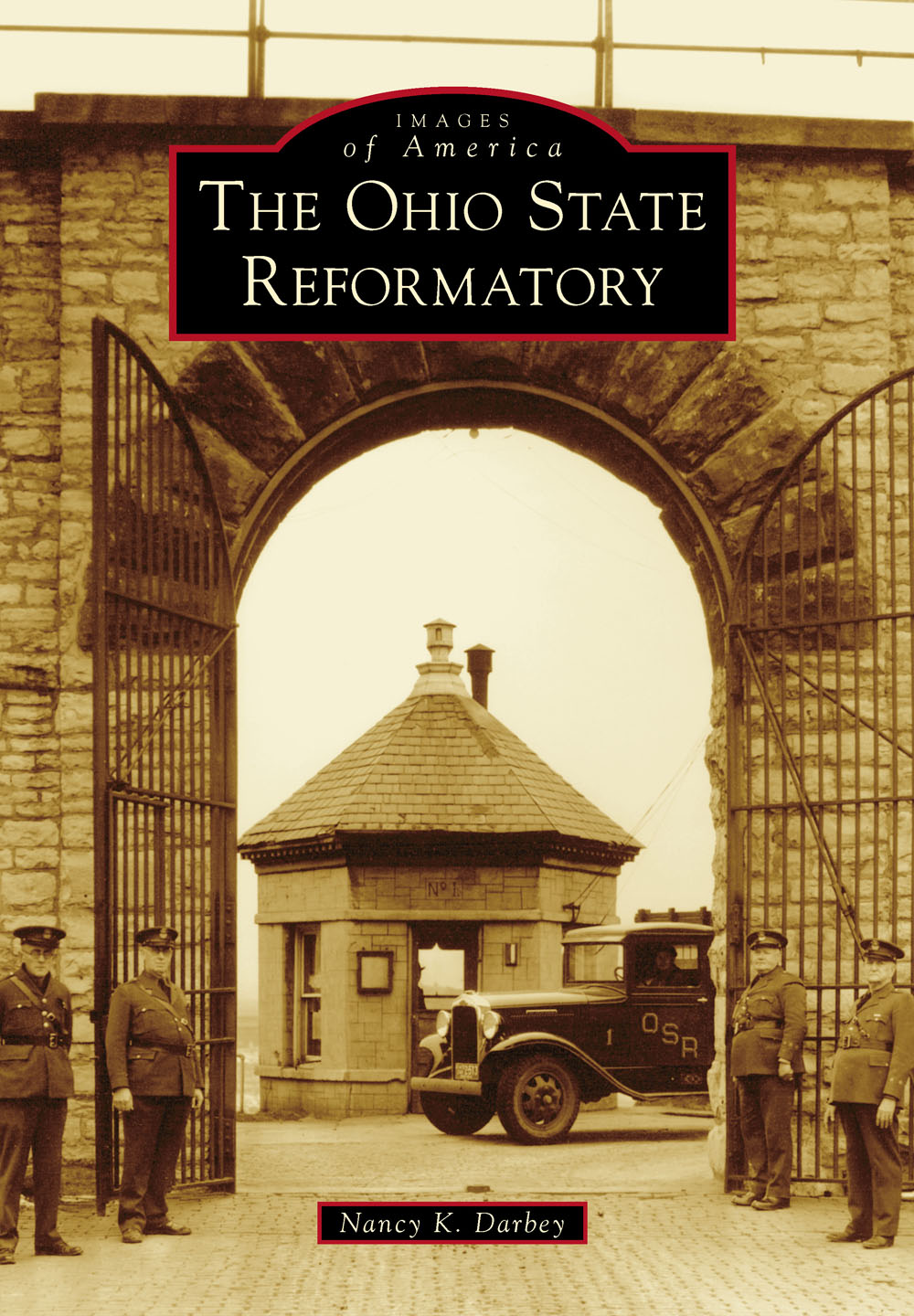
IMAGES
of America
THE OHIO STATE
REFORMATORY

The grounds that would eventually become home to the Ohio State Reformatory was farmland belonging to the Tingley family. The Tingleys donated the land to the government when Pres. Abraham Lincoln called on the states to train recruits to fight in the Civil War. The camp, originally named after former US congressman and Ohio governor Mordecai Bartley, was home to the 15th and the 32nd Ohio Infantry. The camp was later renamed Camp Mansfield as it continued training men for service in the Union army. Volunteers from five surrounding counties continued to train at Camp Mansfield until, in October 1862, a draft was instituted in order to fulfill the quota established for this, the 10th District, of Ohios commitment for troops. It became the 10th Ohio military headquarters. Camp Mansfield ultimately trained over 5,000 troops for the Union cause. Thomas Tingley, the owner of the property, became a sutler, a civilian merchant who traveled with the army.
ON THE COVER: While visitors could easily enter the administration wings in the front of the prison, the west gate was the only entrance into the prison proper. Security at this gate was extremely high, as it was the potential site of escapes. Absolutely every vehicle having business within the prison had to enter here. Prior to the common use of motor vehicles, horse-drawn wagons and buggies approached and waited for a guard to open the iron gate and inspect the contents. This gate was used when inmates were being transported into and out of the institution. Materials brought by truck for various workshops would come through the west gate. The gate included a watchtower that was manned by guards 24 hours a day. Other guards were positioned on the wall and could look down on the gate.
IMAGES
of America
THE OHIO STATE
REFORMATORY
Nancy K. Darbey

Copyright 2016 by Nancy K. Darbey
ISBN 978-1-4671-1489-9
Ebook ISBN 9781439655801
Published by Arcadia Publishing
Charleston, South Carolina
Library of Congress Control Number: 2015940359
For all general information, please contact Arcadia Publishing:
Telephone 843-853-2070
Fax 843-853-0044
E-mail
For customer service and orders:
Toll-Free 1-888-313-2665
Visit us on the Internet at www.arcadiapublishing.com
This book is dedicated to the loving memory of my parents and to Gary, Judy, Dan, Stacie, Jackson, and Olivia with all my love.
CONTENTS
ACKNOWLEDGMENTS
When the Ohio State Reformatory (OSR) was envisioned, little did anyone realize that the building would become an icon of popular culture. Saved from destruction by local grassroots efforts, the building was placed in the National Register of Historic Places in 1995. Prior to the Mansfield Preservation Society taking ownership and conservatorship, much damage had been done to the building. It is a testament to the volunteers who have donated thousands of hours over the last 20 years and their tremendous commitment to the OSR, as well as members of the board of trustees and staff who have donated time and effort to restore and maintain the building and remaining grounds. Many contribute to the ongoing preservation of the Ohio State Reformatory.
I would like to thank my editor, Jesse Darland from Arcadia Publishing. His patience, encouragement, and feedback were so appreciated as I worked my way through the process.
This book would not have been possible without the generosity of so many individuals, including the following: OSR curator Becky McKinnell, for her support and knowledge; Mark and Cheryl Kneram, for their vast collection of documents; OSR staff members Paul Smith and Mary Kennard, for their technical assistance; Dan Seckel, for help with architectural background; and Scott Sukel, for his incredible talent, photograph collection, and wealth of information. Michelle Conine, Jill Keppler, Michael Humphrey, Don Zin, Becky McKinnell, Cheryl Kneram, and Mark Kneram have been invaluable in their help with checking the facts used throughout the text.
Unless otherwise noted, all images appear courtesy of the Mansfield Reformatory Preservation Society.
INTRODUCTION
Prisons, as with innumerable other social institutions, are subject to change and transition. So it was and is with prison reform. In the mid-19th century, reform was viewed as a new form of corrections. Rather than incarcerate all prisoners in institutions intended to isolate and punish, the reformatory movement promoted education, training, and variable sentencing to prepare prisoners for eventual release. Designed to house offenders between the ages of 16 and 30, reformatories would give prisoners training that would allow them to leave prison with a trade, thus reducing the chance that they would commit further offenses. Among the first and most notable of these institutions was Elmira Reformatory in Elmira, New York, which opened in 1876.
The reformatory movement became a focus for the Ohio State Legislature in the 1880s. In the March 1884 Ohio legislative session, Mr. White introduced a bill providing for the erection of a State intermediate penitentiary or reformatory, to which prisoners sentenced for the first time offense are to be sent. Maintenance for the building would be provided by using one-tenth of the proceeds from the Scott Law. Unfortunately, the Scott Law, a tax on saloon owners, was declared unconstitutional by the Ohio Supreme Court in October 1884. That would leave the state to find other ways to provide funds for construction.
Influential businessmen, representing the board of trade, began petitioning the state to locate the new institution in Mansfield. They received help from two important and influential citizens. US senator John Sherman, brother of Civil War general William T. Sherman, and Roeliff Brinkerhoff, a Civil War veteran, owner/editor of a local newspaper, banker, and reformer, were early supporters of the effort. Unbeknownst to them, these men championed a unique institution that would serve the community even when the original intent was changed by social demands.
In 1885, Mansfield was selected as the site for the new facility. It was seen as a boon to the local economy, providing employment opportunities for citizens. The population of Mansfield grew from 9,800 in 1880 to 13,000 in 1890, just prior to the opening of the penitentiary. Mansfield was accessed by four railroads, which allowed for an economy that moved from agriculture to business.
Once the city had been selected, it fell upon the community to find a site that would accommodate the building and its future construction. The city began with the purchase of 30 acres north of town that had been the site of a Civil War training camp, Camp Mordecai Bartley. Soon after, the state purchased 150 additional acres of adjacent land.
Cleveland architect Levi Scofield was hired to design the building. As an architect trained in Europe, Scofield was known for his massive structures that rivaled European castles. His work, intended to create a sense of inspiration and spirituality, used a combination of three architectural styles: Victorian Gothic, Richardsonian Romanesque, and Queen Anne. Ultimately, the main building itself would encompass over 250,000 square feet. Thus began a decade-long effort to complete the Ohio State Reformatory. Over those 10 years, the project would be plagued by lack of funding and by second-guessing by the legislature. By 1891, rumblings in the legislature began due to rising costs. At one point, rumors began circulating that a better use for the building would be as an inebriate asylum or drunkards refuge. An editorial in the
Next page

